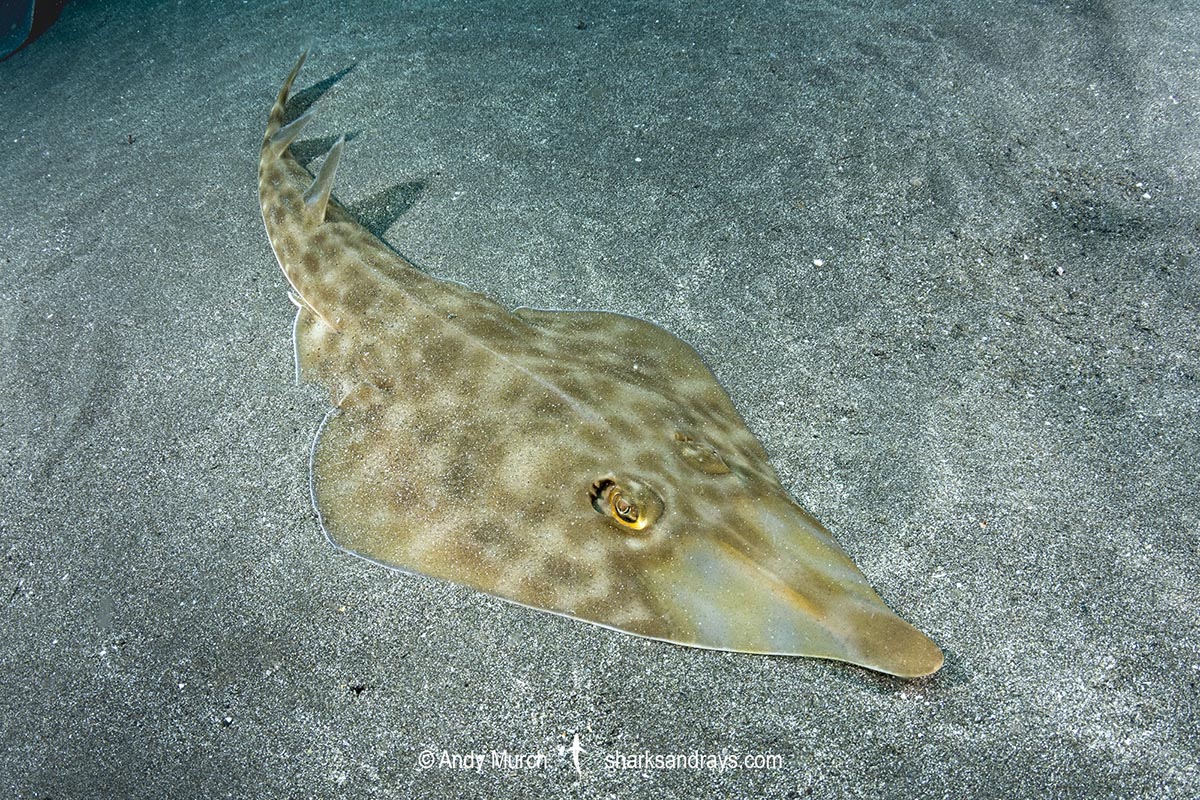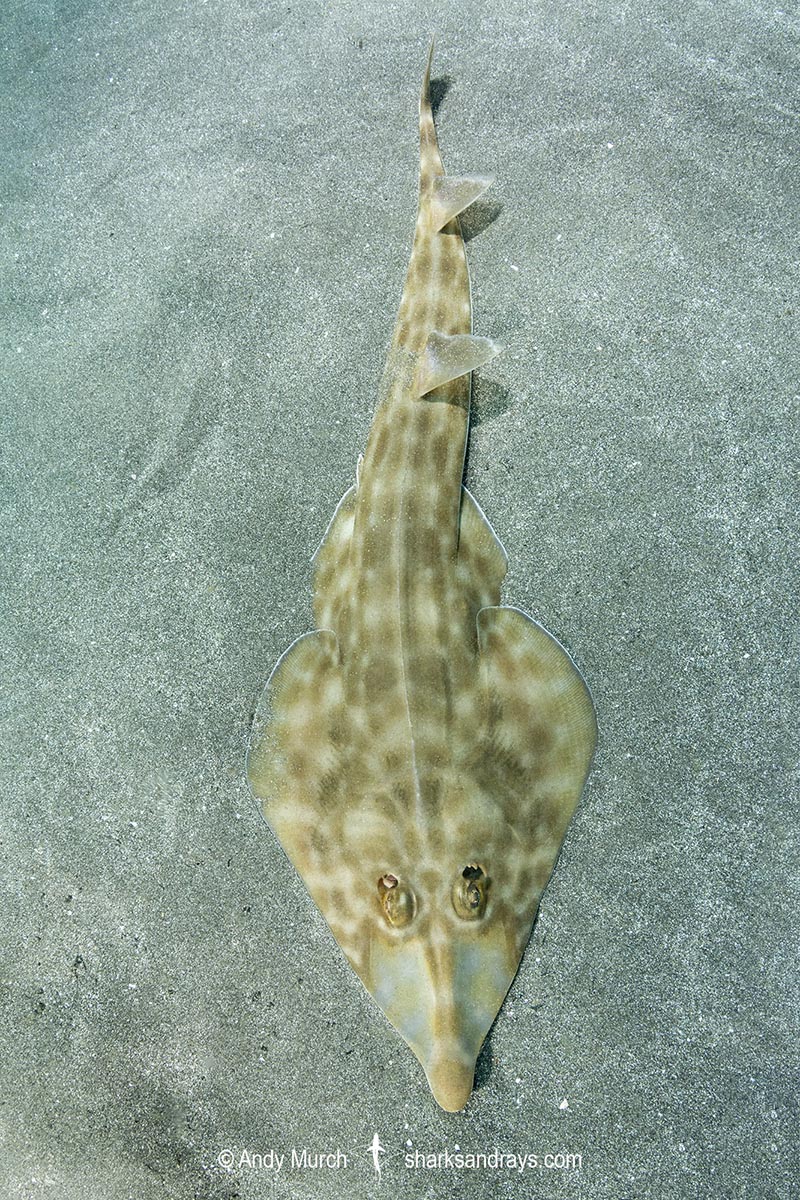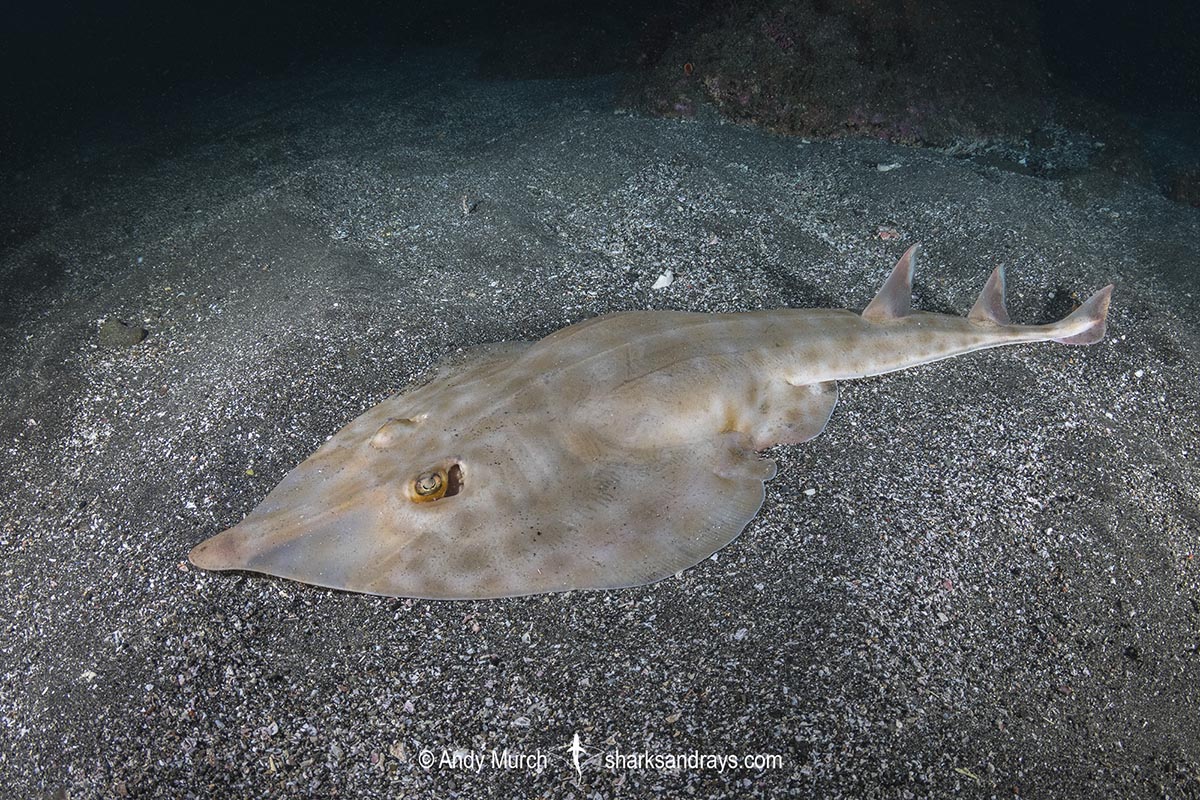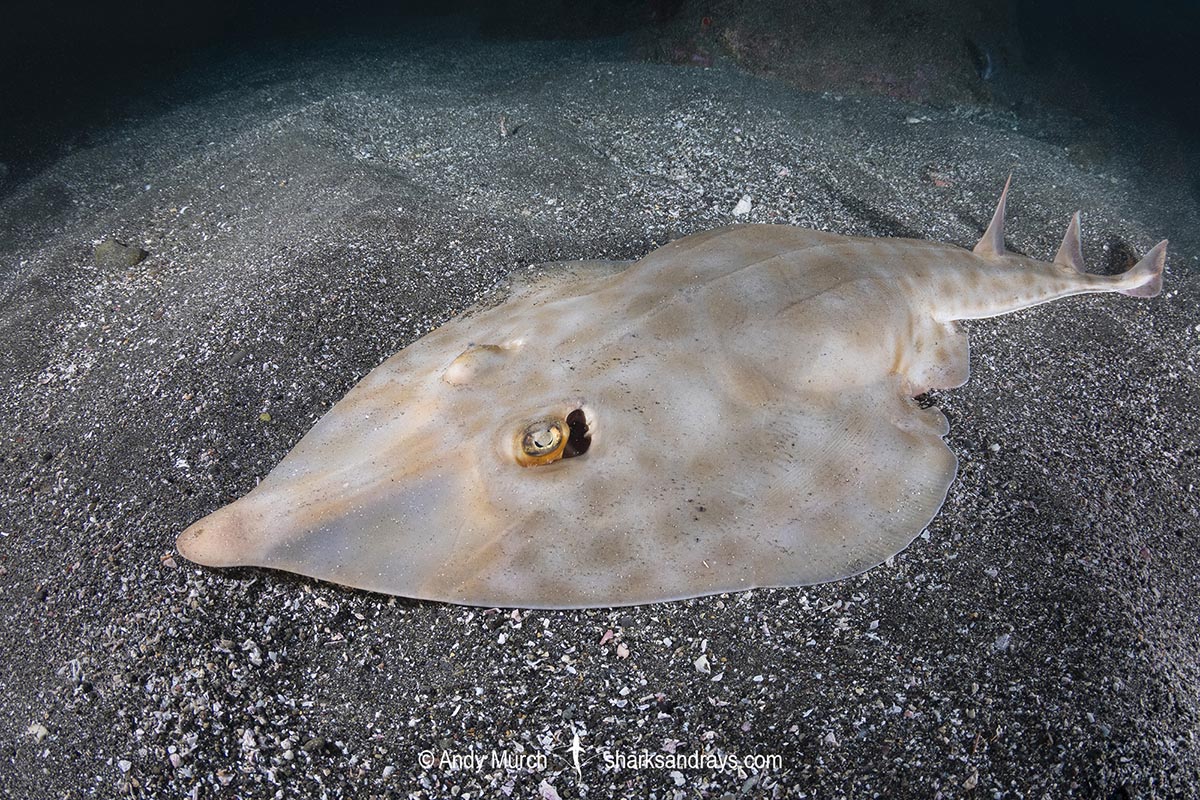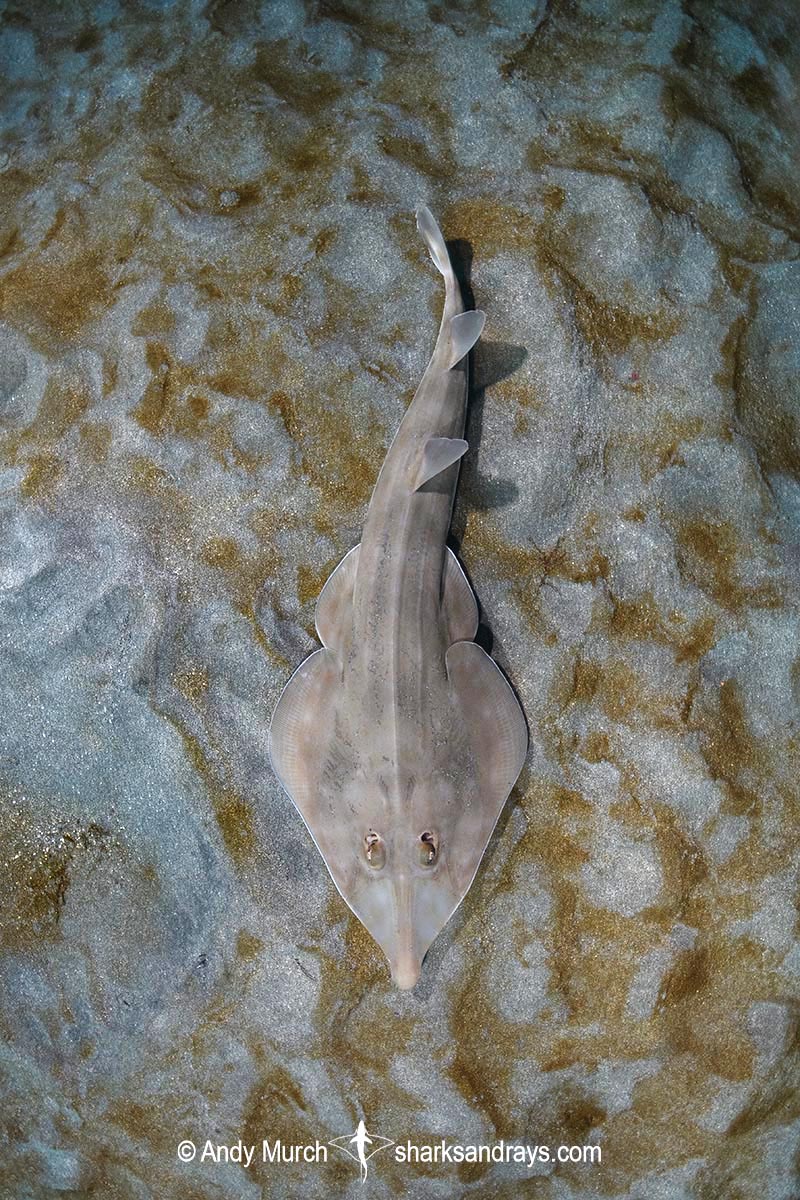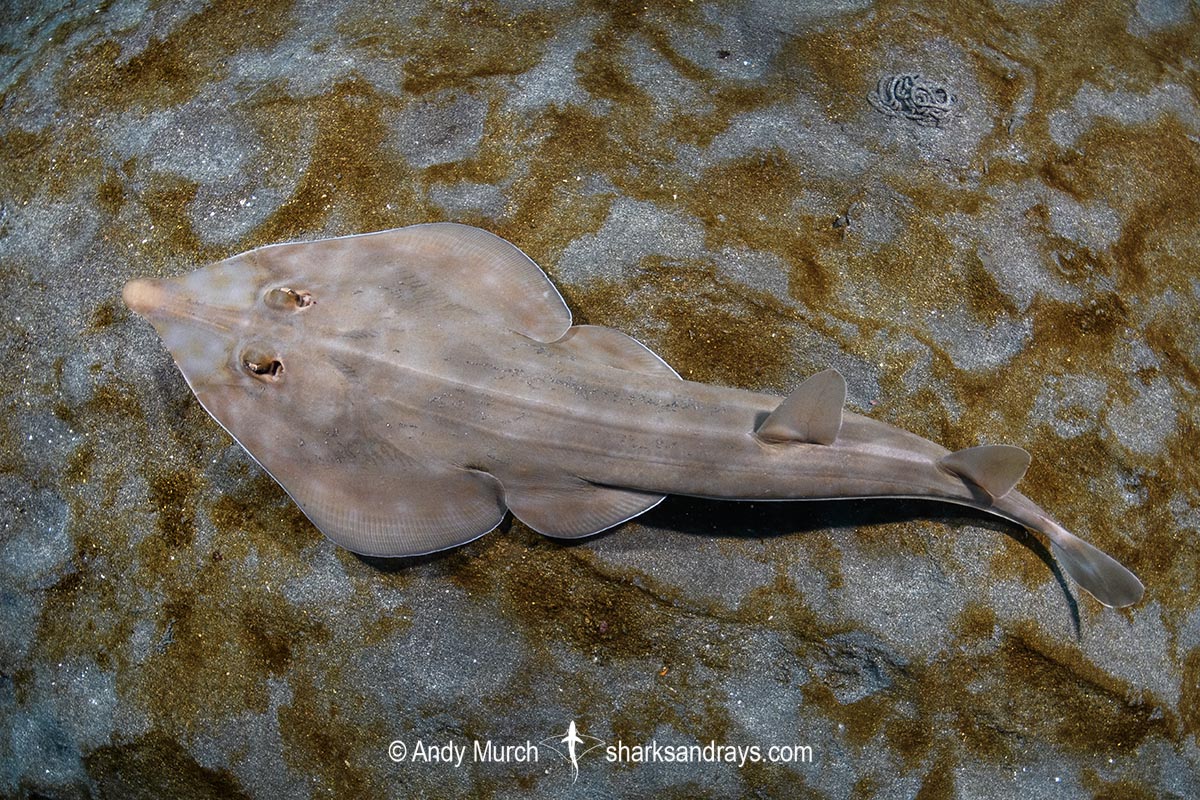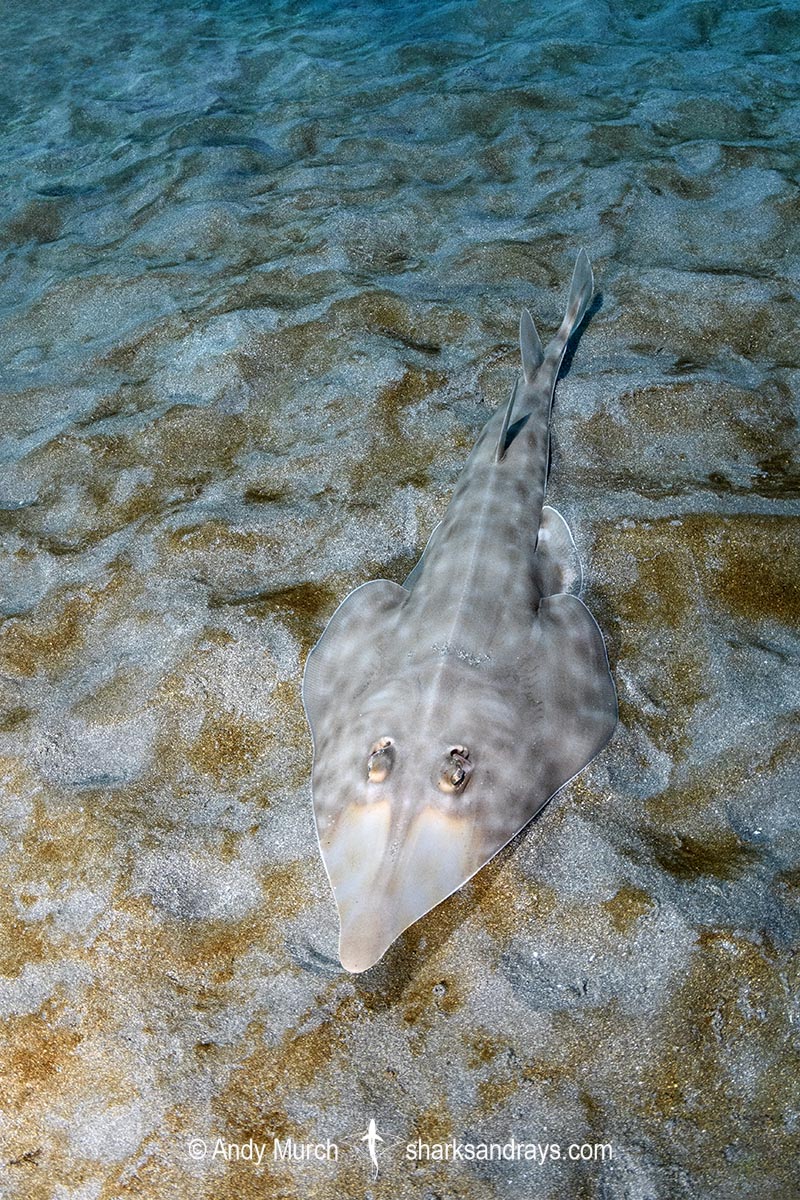Common names
Bottlenose Guitarfish, Brown Guitarfish, Yellow Guitarfish.
Binomial
Rhinobatos schlegelii
Synonyms
Rhinobatos schlegeli, Rhinobatos schlegelli, Rhinobatus natalensis, Rhinobatus schlegelii.
Identification
A medium-sized guitarfish. Long, wedge-shaped snout with a bulbous, protruding tip. Rostral ridges almost parallel, narrowly separated along their entire length. Eyes large. Preorbital length 4.3-5 x orbit length. Spiracles with 2 small skin folds on posterior margin; inner fold indistinct. Nostrils positioned obliquely. Nasal curtain absent. Anterior nasal flaps extend over nostril opening but not beyond.
Anterior margins of disc straight or weakly convex except at bulbous tip. Pectoral apices broadly rounded. Skin completely covered in small denticles. Small thorns around orbits and above spiracles, on shoulders, and along midline and tail to first dorsal origin.
Tail robust and long; 1.6-1.7 x disc length. Dorsal fins large and well separated, with acutely rounded apices. Caudal fin triangular, without a defined lower caudal lobe, upper tip mildly acute.
Colour
Dorsum pale, greyish-brown, or yellow-brown, often with a dense pattern of diffuse, darker brown blotches. Rostral cartilage very pale but with subtle blotches. Ventrum white, sometimes with a dusky tear-shaped spot on snout tip.
Size
Maximum length 100cm. Size at birth unknown.
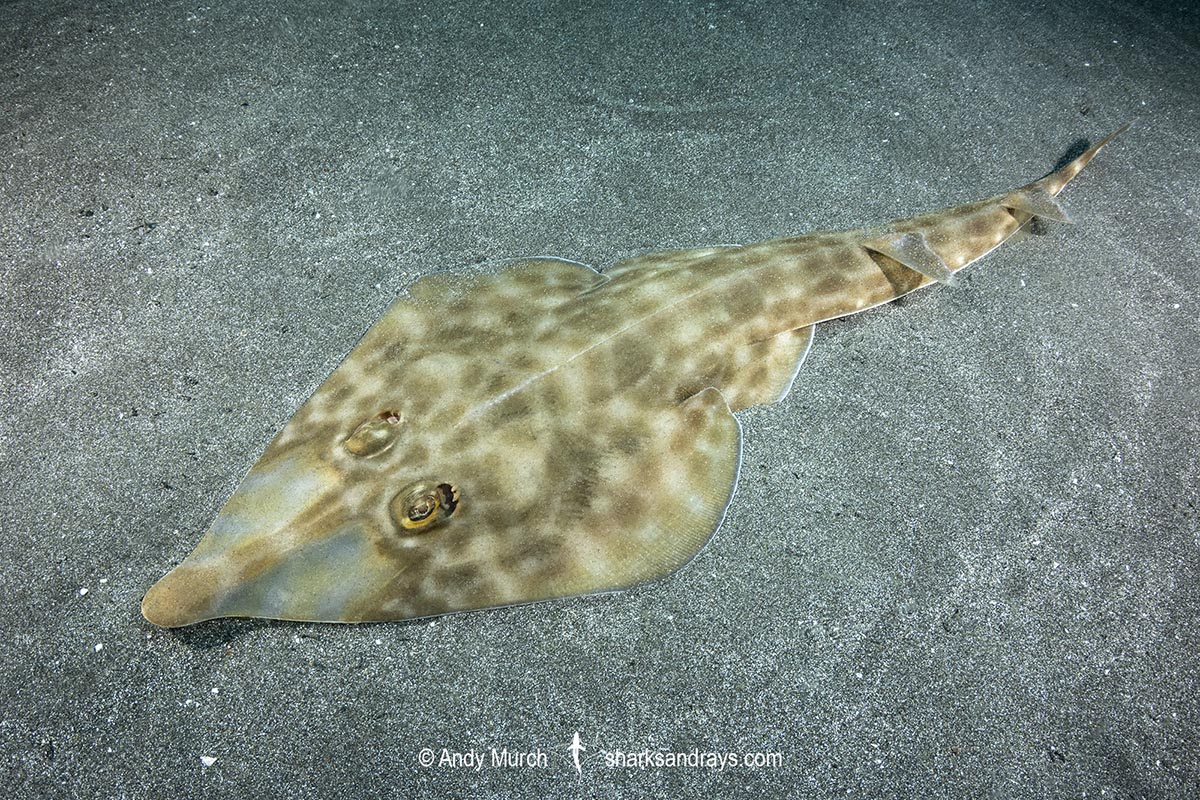
Conservation Status
CRITICALLY ENDANGERED
The Bottlenose Guitarfish (Rhinobatos schlegelli) is caught in numerous fisheries throughout its range and is retained for it’s meat and fins.
Bottlenose guitarfish are rare in Japan, have virtually disappeared from South Korea, and have declined by 75–96% over the past 30 years in a part of Taiwan where mainly gravid females are landed.
Overall, it is estimated that this species has undergone a population reduction of 80% over the past 30 years.
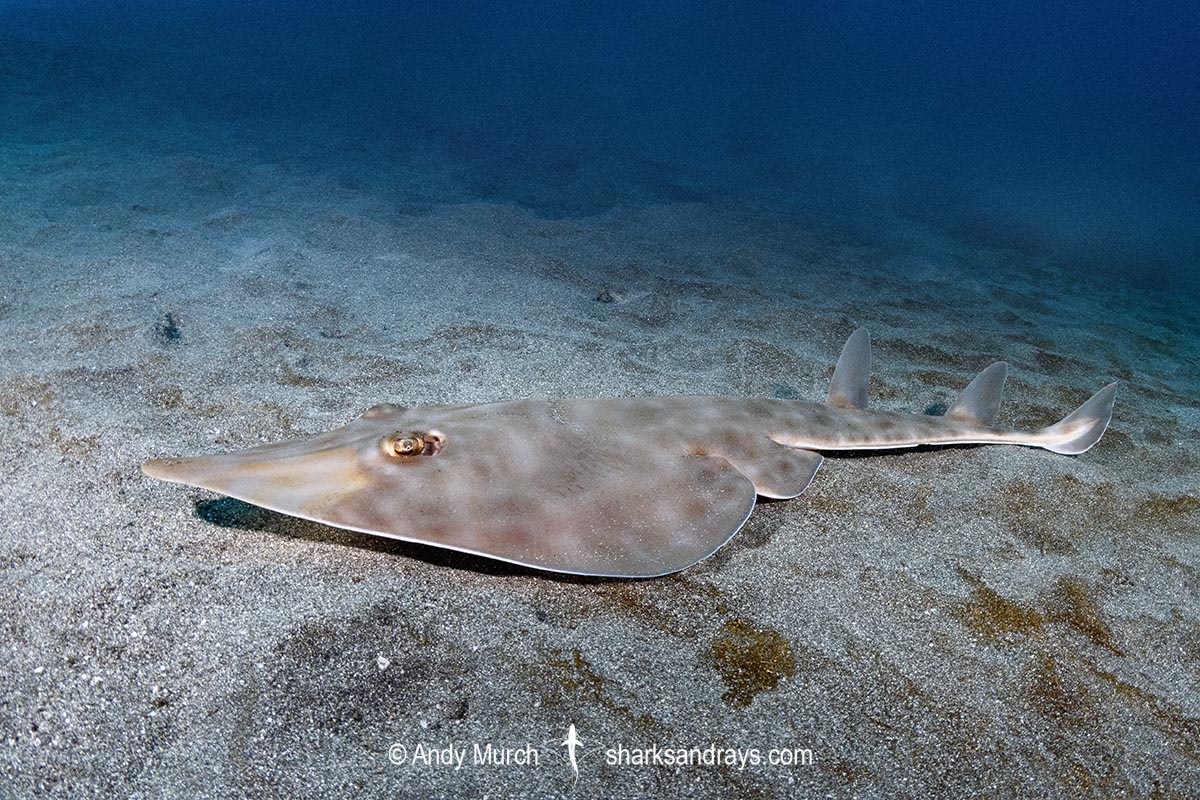
Habitat
Tropical/temperate seas. Benthic on soft sand or mud substrates, sometimes adjacent to reefs. From close inshore to 230m on the continental shelf.
Distribution
Northwestern Pacific. The bottlenose guitarfish occurs from central Japan to Taiwan, including South Korea and southern China. Records from the Philippines and India are likely misidentifications.
Reproduction
Aplacental viviparous. Litter size up to 1-14 pups. Gestation period ~12 months.
Diet
Unknown.
Behavior
Poorly known.
Reaction to divers
Fairly easy to approach.
Diving logistics
The bottlenose guitarfish is occasionally seen at dive sites on the Izu Peninsula and off Chiba, on the south coast of Honshu, Japan.
What’s new
View our full list of updates
Similar species
Philippine Guitarfish Distinguished by bolder markings, lack of protruding snout tip, and more southerly range.

